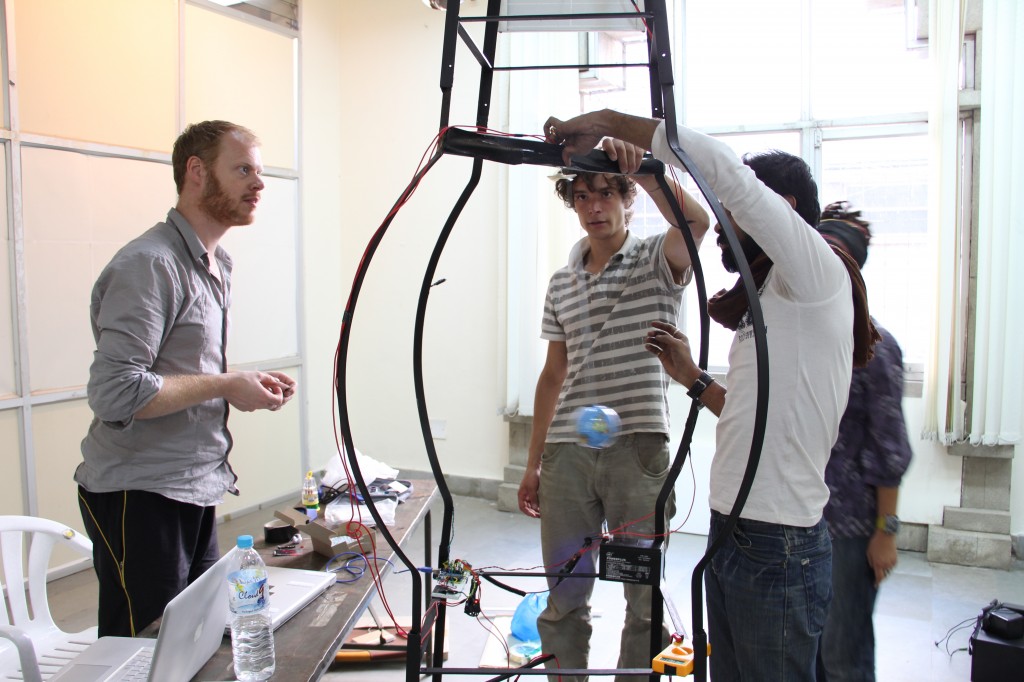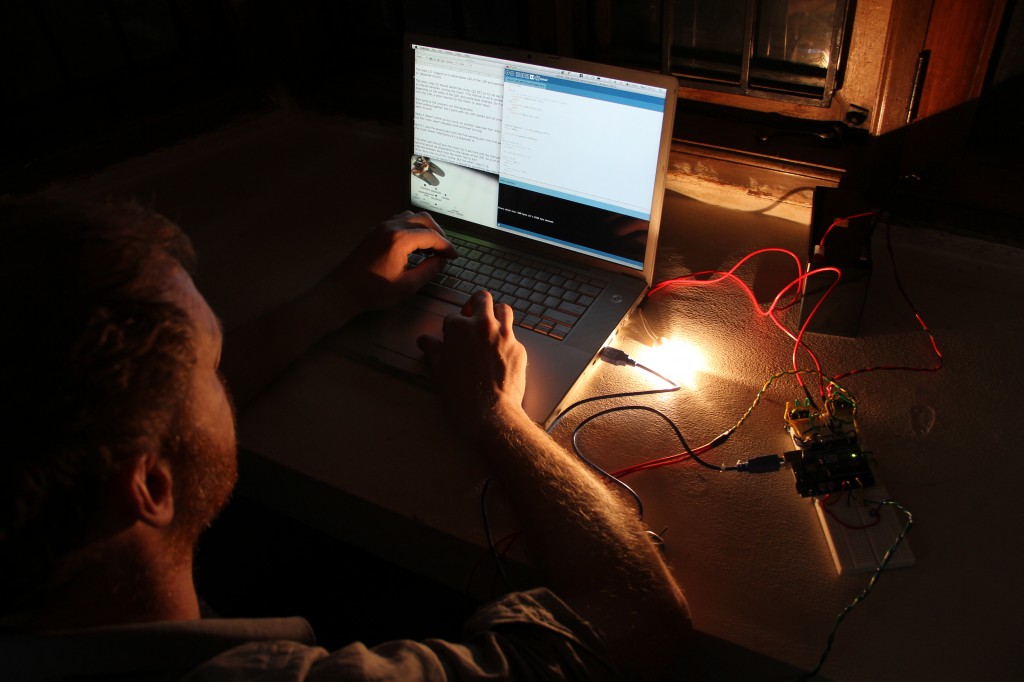Solar Energy Clock (formerly know as Robotoconomy)
An other way of interpreting time.
A clock which speed is depending on the amount of solar energy collected at that time.
The more sun(energy) the faster the clock ticks.
At night time the clock will be running really slow and will switch the lights on for a ‘shadow society’.
This ‘shadow society’ representing
a micro world that comes alive when the night time comes.
The rhythm of the clock is displayed by a kind of 3D pendulum. A globe of the world that swings circular once in a while. This while, the interval, is directly depending on the amount of solar energy collected. The more energy, the shorter the intervals will be.
As for the changing over time, a sound is played and recorded at the same time. At the same interval as the pendulum (depending on the amount of solar energy) the recorded sound will be played and again at the same time be recorded. Of course this will lead to background noise in the recording and therefor the sound will change every recording, like a ‘Chinese whisper’.
concept:
The concepts of this clock stands for an alternate perception of time. Time as it is now is placed in a rigid structure, but maybe that isn’t the best way to deal with time.
For instance; one can imagine that downtime has a different pace than work time. At night we al would like that other ‘creatures’ would do our work.
The ‘micro-society’ stands for the ‘shadow world’, a shifted society that feeds on mediated sunlight. Sunlight or solar energy being one of the only free products remaining (so far…). When the night falls, the clock will switch on some lights, where the mini-robots will get their energy from, for them to be able to move.
The clock is an open construct, as time is an open concept (open for interpretation). To make this visible, the details should be visible. The time of this clock is depending on location. This clock can’t be synchronised. The time depends on location; if the clock is moved it will tell a different time.
The clock is build in such a way that it is self sustaining. The clock feeds only on the solar energy which is collected and stored in a battery. One can see the clock as a kind of perpetual mobile. When the battery runs empty, enough energy has to be collected via the solar panel to get the process going again.
Build in only four days with a team of five members who didn’t know eachother before the project. A diverse mixture of people and skills which resulted in a physical and working installation presented at a one day exhibition at Chitra Kala Parishad in Bangalore (March 17, 2011). This exhibition was the closure of the Space the Final Frontier project.
Video of the installation at CPK
Work in progress:
Installing the clock:
Late night programming and testing:

